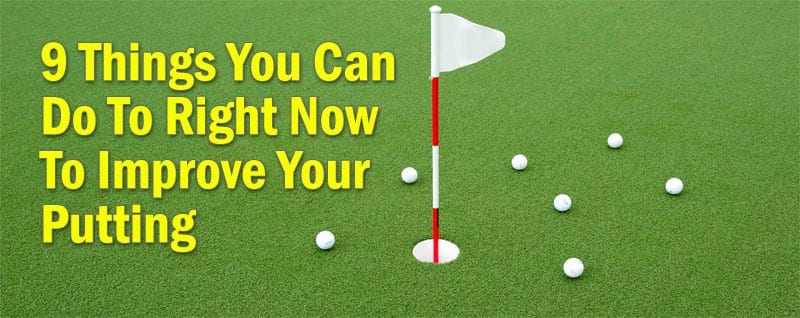
Many say putting is the most important part of the golf. I can’t say I fully agree with that statement, but I do believe there are many people out there who don’t practice putting because they don’t know what they need to do differently.
My Dad loves to go to the driving range and work on his golf swing. Unfortunately, it tends to be right before he goes out to play, which is something I tell him not to do.
Then he’ll go over to the putting green, hit a few long putts, then some short putts, maybe make a few, and miss a few, but there isn’t a plan. This article isn’t just for you Dad, it’s for you and everyone else out there who needs to get their putts from the upper 30’s to the high 20’s.
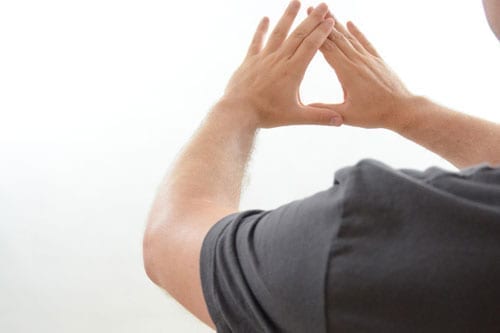 First you need to find out what eye you use to focus on things in the distance. An easy way to identify your dominant eye is to make a small triangle with your hands, between your index finger and thumb making L shapes.
First you need to find out what eye you use to focus on things in the distance. An easy way to identify your dominant eye is to make a small triangle with your hands, between your index finger and thumb making L shapes.
Then with both eyes open, focus on something inside that triangle in the distance. Close your right eye, if you can still see it, you are left eye dominant. You can now try the other eye and watch the object you were focusing on disappear.
If you have ever played darts, or fired a gun, this may be familiar to you. If you haven’t, now you know how to get that bulls-eye or hit that clay target.
All this really means is that you need to use the same-sided hand as the eye you used to focus on that object. I use my left eye, so I use my left hand to line up my golf ball to my target.
People tend to see things aligned better when using a line. I recommend drawing a line, or using the logo on your golf ball (some even have arrows) to help line-up your putts.
Now let’s talk about where to line up your putts. Green reading has made a huge leap in technology in the past 5-8 years.
Back in the olden days, people would squat or stand behind their ball, pick out a line and then set up to the ball. I’m sure there are many people reading this article who still do it that way.
Some, maybe more advanced players will start the same way, walk around, behind the hole, do another squat, maybe even do a 360-degree walk around the entire green, then do a third squat, and then set up to their ball and putt.
When I see players do something like this, I get all sorts of answers from, ‘I don’t know, I just do it that way,’ to, ‘I saw it on TV so I started doing it.’ I even had one of my students say, ‘I’m not even sure what I’m really doing, and I can’t see the break or the line.’
Even if you think you are good at reading greens, give this a try, and I bet it will help. Stop doing squats on the putting green, that’s what the gym is for!
Your eyes can be very deceiving – especially if you’re not utilizing your dominant eye. Instead, use your one balancing tool you have in your bag, your feet.
Try this: find a straight 10-12 foot putt on a practice putting green, preferably straight up a slight incline. Stand behind the ball, with your feet about shoulder-width apart and about 12-14 inches behind your ball.
Your toes should be pointing right at the hole. This is important to remember going forward – always start with your toes point at the hole, not what you think the line of the putt is.
If you were to close your eyes and just focus on which leg had more weight on it, you would probably say they are 50/50. This is absolutely correct. Now, walk 1-3 yards in a semi circle to the right, and do the same thing, feet pointing at the hole.
As you can imagine, the left foot would have a little more weight on it because we were walking a little uphill to the right. Conversely, if you were to walk from your starting position to the left, your right foot would have more weight on it.
This is a great way to FEEL the break of the green. If your left foot feels like it has more weight, the ball will roll to the left.
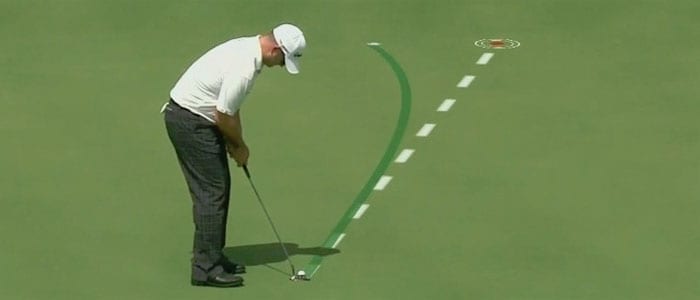 Golf does not defy the laws of physics, and regardless of what you hear on TV (someone talking about grain or the pull of the mountains), golf balls cannot break (roll) uphill and they cannot climb against gravity.
Golf does not defy the laws of physics, and regardless of what you hear on TV (someone talking about grain or the pull of the mountains), golf balls cannot break (roll) uphill and they cannot climb against gravity.
When put this way, it kind of makes sense, right? Okay, so now the question becomes, how much break do you need to play? There are two other factors that are very involved, and I never like to plug myself, but if you want a follow up, I would love to show you what those other two factors are. They are difficult to explain in just words and even harder to comprehend.
So we are aligned perfectly and the putter is getting ready to hit the ball, you feel the putter grip and make your stroke and immediately the line disappears. It’s time to roll the ball.
If you walking down the street and hand roll a car tire, how would you go about doing it? I certainly hope you wouldn’t try it the CrossFit way where you have to squat down and lift the tire, flipping it onto its flat side. And I certainly hope you wouldn’t try to lift it up and bounce the tire down the road.
I would take my hand, angle my palm down to the ground, and push slightly forward, and slightly up on the tire to get it to roll. This would take very little effort on my part, and is also the best way to roll the ball when putting.
Let’s start with setup. The ball position should be slightly forward of the middle of your feet and the putter shaft should be either in line, or slightly in front of the ball. This makes it easier for the putter head to act as my palm (angled down, or de-lofted).
Then, when I make my stroke, the putter head needs to move up slightly as it’s hitting the ball. When you are trying to execute this (1) make sure the putter head is striking the ball high on the face and (2) make sure the face is square.
We are rolling the ball on our desired line and now putting is getting easier. However, the reason why you’re still missing putts is because of your speed. Speed is the most important aspect of putting, so why not start with it? Well, in order to have consistent speed control, the ball needs to roll as mentioned above.
Once we can get it rolling, it’s easier to work on the games and drills it takes to refine the stroke for speed. Here are a few games/drills you can do to help with speed.
- Ladder Putting – Just what it sounds like, set up 12 golf balls starting from 1’ away from the hole, and attempt to make each loop
Advanced level – don’t move on until you make the previous
Elite level – if you miss one, start from the beginning - Zone Putting – Find a zone between 30’ by 4’ (mark it off with tees and/or string), putt as close to the end as you can without going outside of the zone. The next putt must be shorter than the first and the 3rd shorter than the 2nd and so forth. Try to get 5 balls to come to rest in the zone.
Advanced level – try for 10 golf balls
Elite level – use 10 golf balls, and the last putt must be longer than 5’ - 7-up – this is a game you can play with 2 to the 3 friends and the game is played until someone gets to 7 points first. It’s easy to pull ahead, but choose the next putt carefully. Whoever gets the closest to the hole, gets 1 point and has to pick the next hole and has to putt first. Here’s how the scoring works:
• 1 point for closest to the hole
• -1 point for a 3 putt (pick it up if you miss your attempt)
• 2 points if you make it
• 3 points if you make it after someone else already made it - Putting Combine – try to following and grade yourself. Continue to work on it, then 2-4 weeks later, grade yourself again. Was your score higher?
• 5 putts from 3’
• 5 putts from 5’
• 5 putts from 8’
• 5 putts from 14’
• 5 putts from 5’ 12” past
• 5 putts from 8’ 24” past
• 5 putts from 14’ 24” past
• 1 ball each from 6’, 9’, 12’, 15’, 18’ ladder
1 ball each from 39’, 42’, 45’, 48’, 51’ 6’ target circle








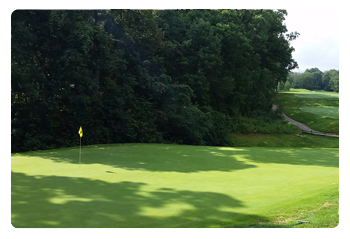 Find a Golf Course
Find a Golf Course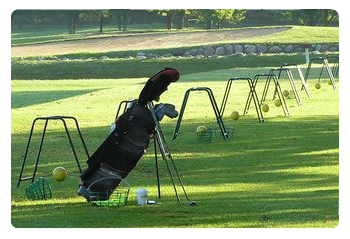 Find a Driving Range
Find a Driving Range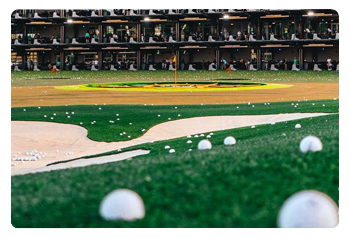 Find a Topgolf
Find a Topgolf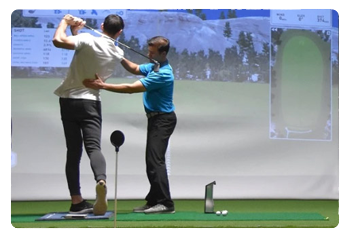 Find a Golf Instructor
Find a Golf Instructor